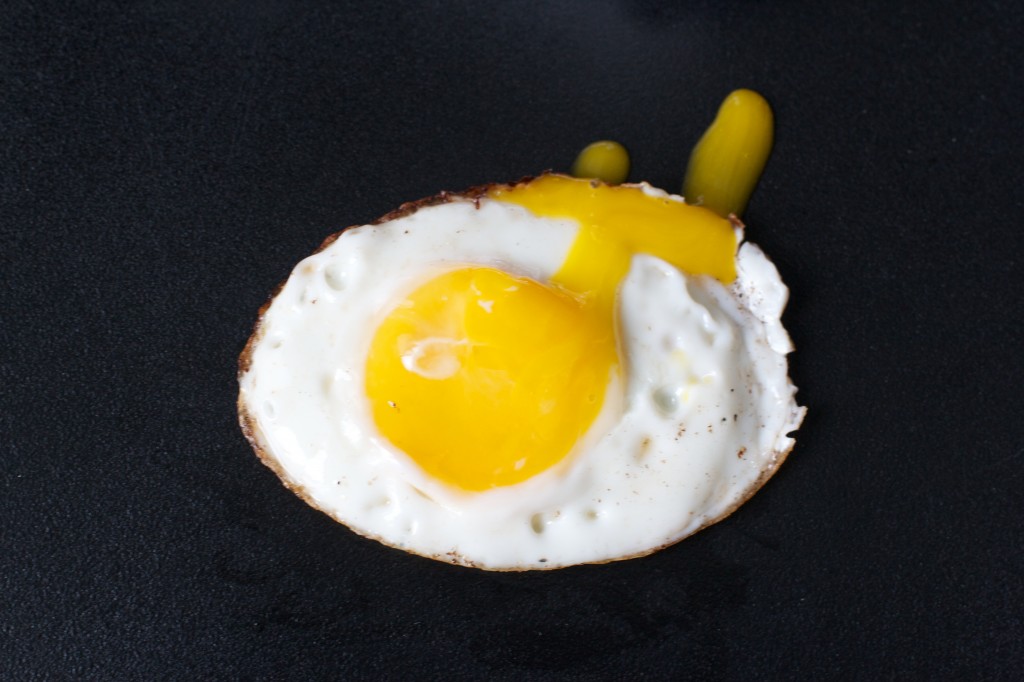Egg-cellent!


Hard-boiled. Over easy. Scrambled. Poached. There are dozens of ways to cook eggs, and eggs are arguably one of the most versatile ingredients out there. They’re used in sauces, main dishes, and even desserts (hello, French toast!) in cuisines all around the world. A scientific experiment in England even demonstrated a correlation between personality and egg preference.
But did you ever stop to think about what kind of eggs you’re eating? In the United States, the most mainstream eggs tend to come from chickens. From free-range to organic to white, chicken eggs are so diverse that we tend to forget about all of the other kinds of eggs out there. Let’s take some time to explore.
The closest cousin to the chicken egg is the duck egg. Though they’re just becoming popular in the United States, they’ve been a delicacy for hundreds of years in places like France and China. Duck eggs are much larger than chicken eggs and have six times the amount of Vitamin D, resulting in a richer, creamier taste. The yolks are higher in fat, while the whites are higher in protein, so it’s best to cook these eggs with a gentle touch. Traditional Chinese “century eggs” involve soaking duck eggs in a mixture of clay, ash, salt, quicklime, and various other ingredients for several weeks to several months. Century eggs, and other Chinese variations of duck eggs, can be found at various supermarkets in Chinatown for less than a dollar each. For an easier at-home treat, we suggest baking one over a bed of roasted red peppers. Simply crack an egg into a ceramic ramekin and bake until the whites are set. Top it off with some flaky sea salt and freshly ground black pepper.
If duck eggs aren’t quite your thing, why not try quail? Coming in at about the size of a quarter, quail eggs prove that all eggs are not created equal—literally. According to food enthusiast Alton Brown, each one has a black pattern on its shell unique to that particular egg. In Japanese cuisine, quail eggs are often eaten raw, inside sushi, or on top of raw oysters. In other countries, particularly those in Southeast Asia, quail eggs are considered street food, often served deep-fried or as an accompaniment to beer. Pick up a box of quail eggs at your local Asian supermarket, like H-Mart in Upper Darby, and try soft boiling them for a light, protein-packed snack. Quail eggs have a much higher yolk-to-whites ratio than chicken eggs, and soft boiling ensures that you’ll get plenty of yellowy, runny goodness in each bite.
On the other end of the spectrum is the ostrich egg. Shiny white, extremely heavy (three pounds!), and as large as a young child’s head, ostrich eggs originated in Africa but can now be found in farmers’ markets or at Whole Foods for about $20-30 an egg. Since an ostrich egg has a light and fluffy texture, the best way to prepare one is by scrambling it with olive oil.
And yet, we can never forget about the classic chicken egg—the one that will always be closest to our hearts. Our favorite method of preparation is poaching. Break an egg into a pot filled with near-boiling water and a dash of vinegar, and remove after three to four minutes with a slotted spoon.
No matter what kind of eggs you decide to work with, you can never really go wrong. And if you do happen to mess up, that’s all right. It’ll be just another excuse to order the fabulous goat cheese omelet at Parc.
— Tina Hsu
Yearning for a taste of some of these unusual eggs? Head on over to The Dandelion for a pan-seared foie gras, applewood smoked bacon, duck egg, and balsamic shallot jus appetizer. Quail eggs more your style? Get crack’n at Morimoto.